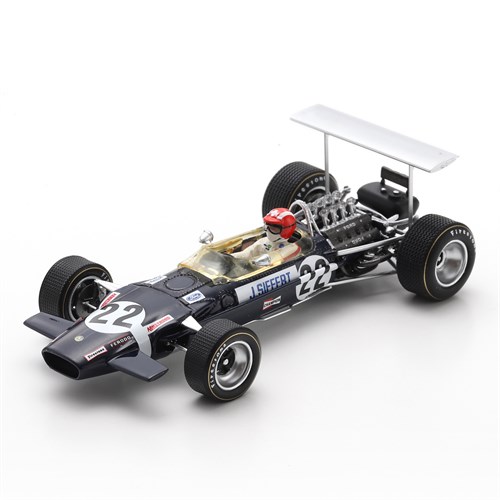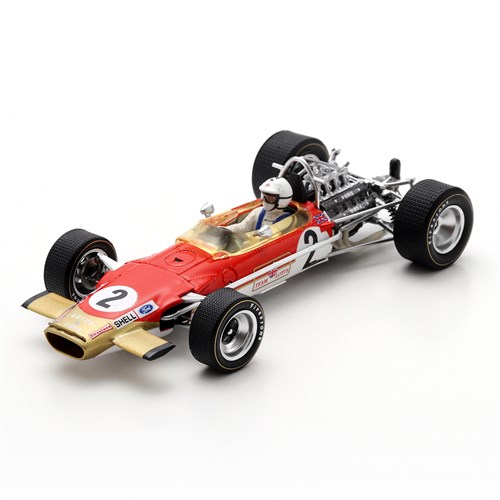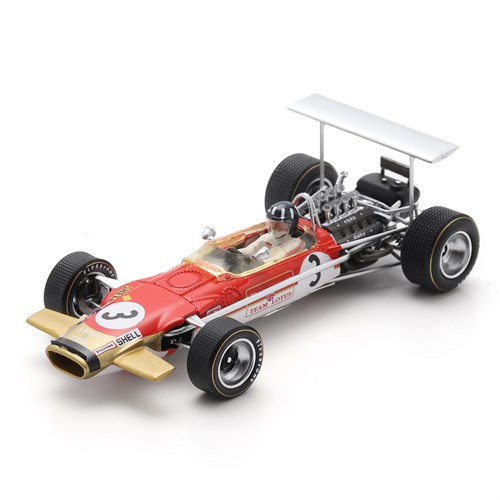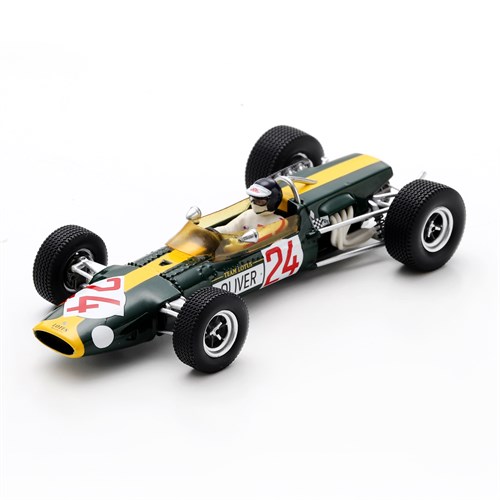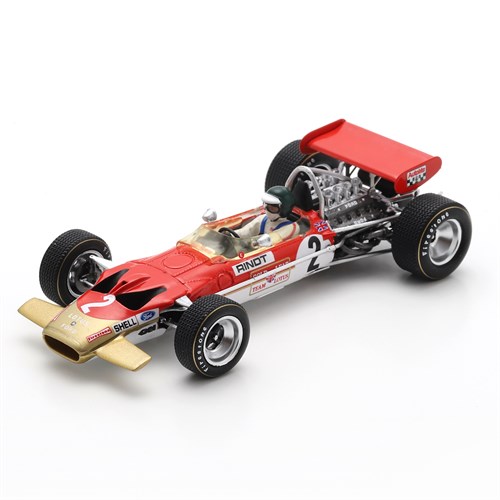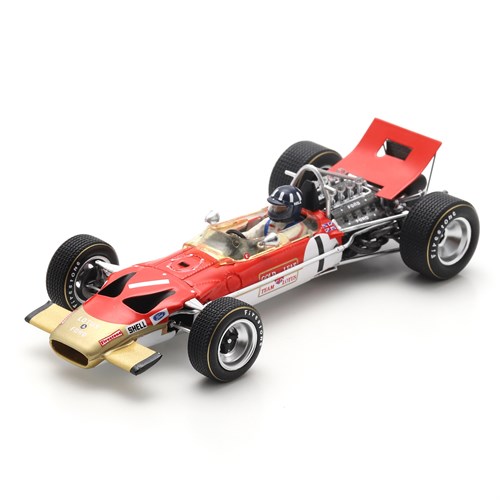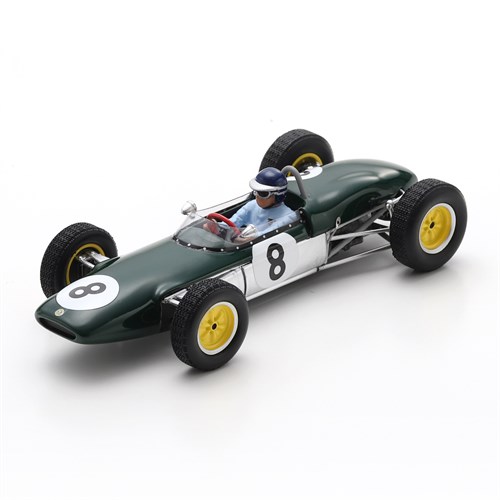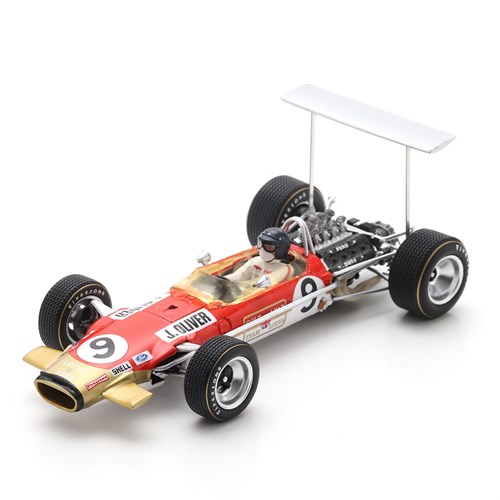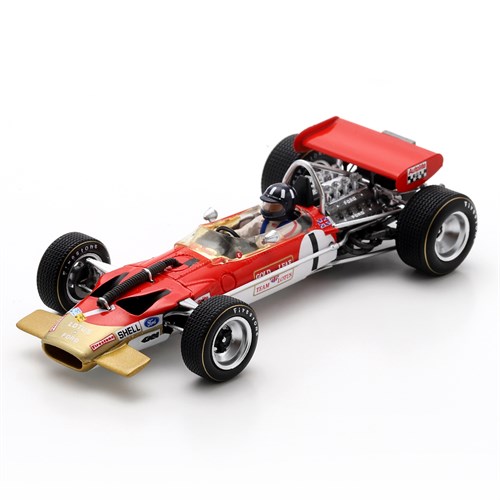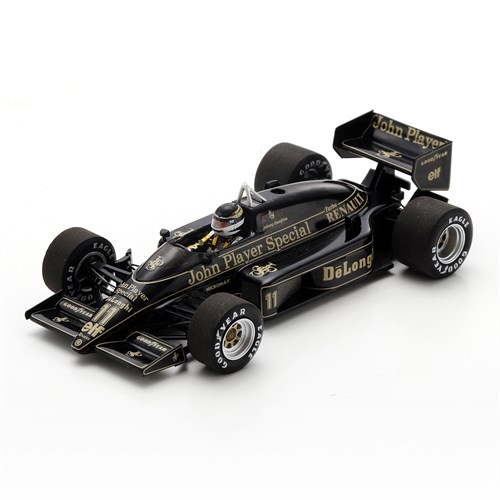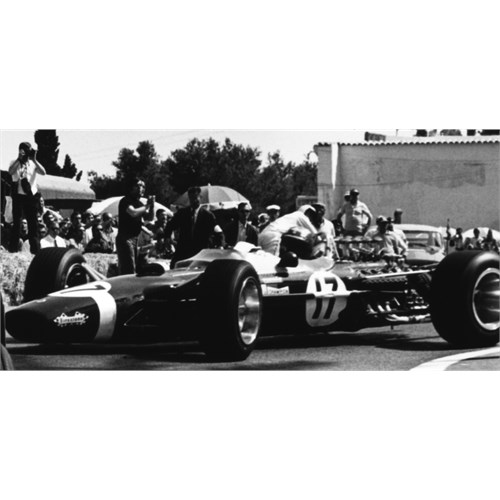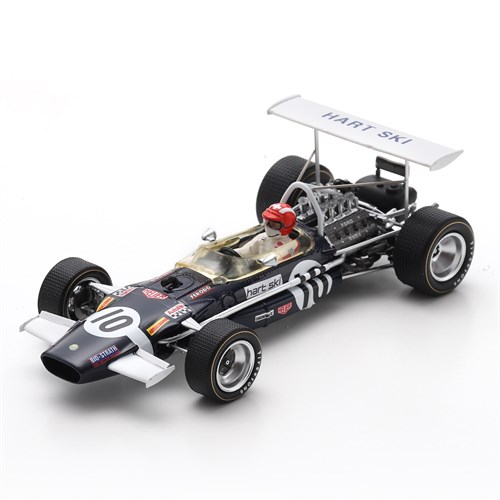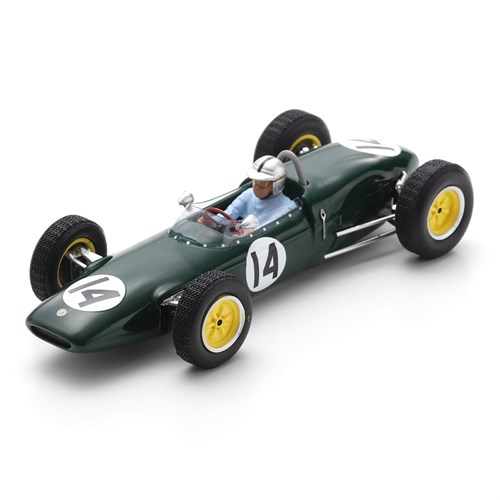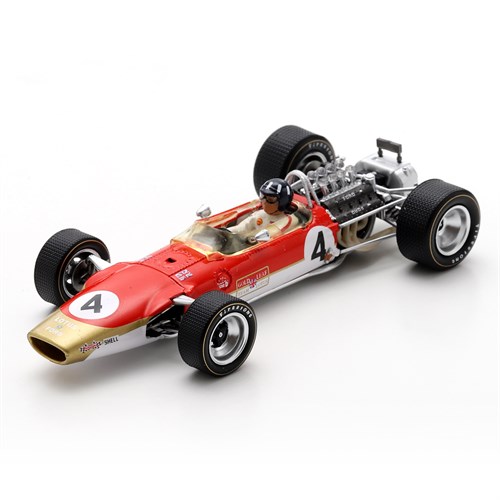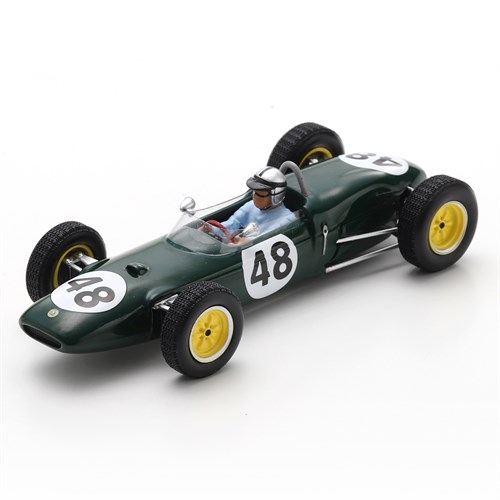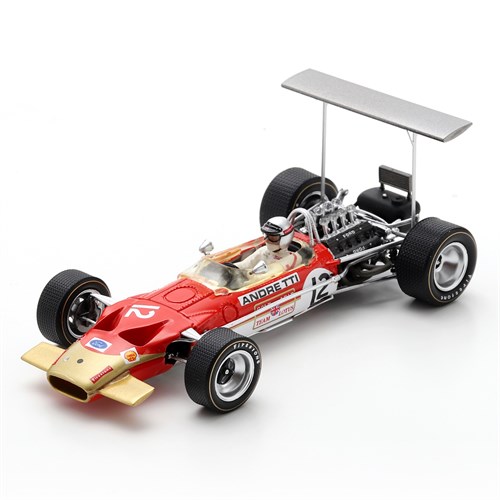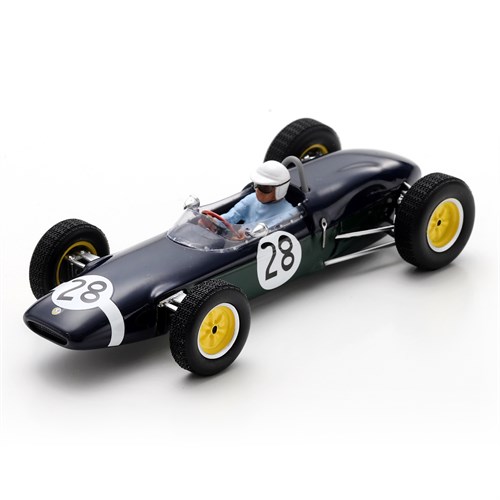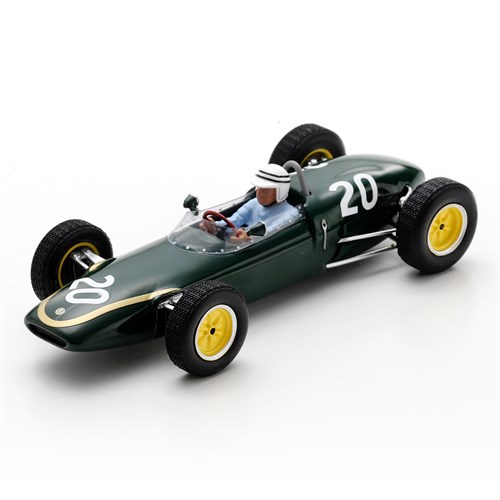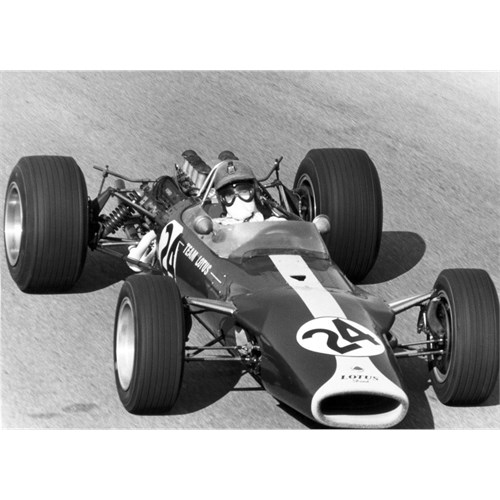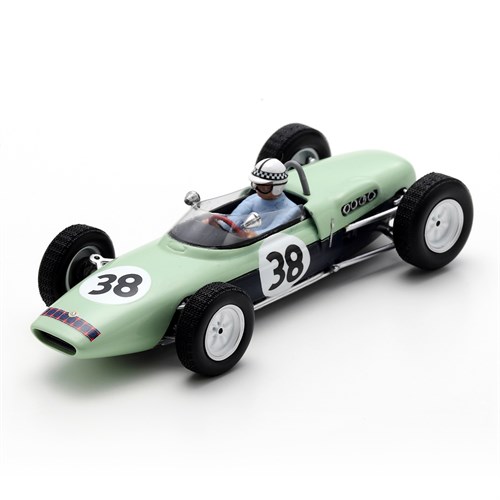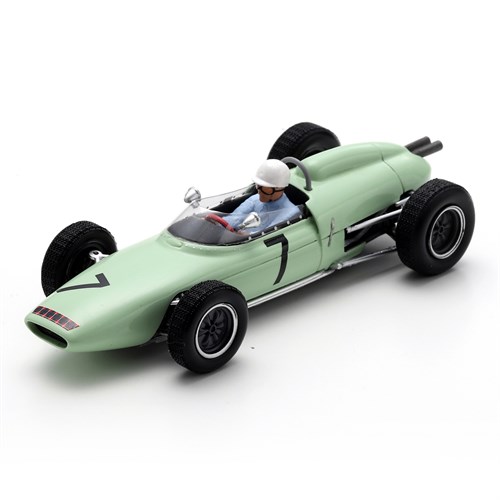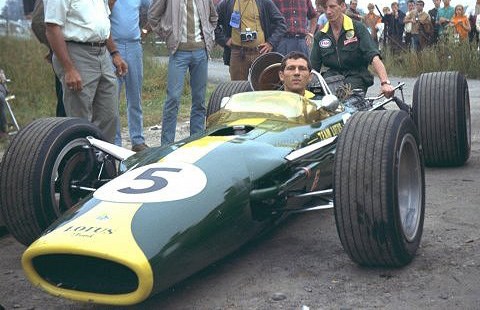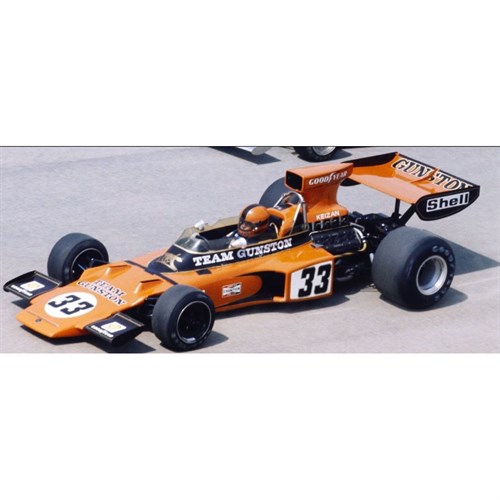- Menu
- Diecast brandsFeatured brandsAll diecast brands A - L
- F1 models
- Road carsSearch by marque A-JSearch by marque L-ZSearch by scale
- Motorsport modelsSearch by motorsportSearch by scale
- Motorbike modelsSearch by motorbike typeValentino Rossi
- Other models
- Models by Scale
- SaleSearch by product typeSearch by scale
- Stories
- Sign In
- Register
Lotus F1 model cars | Lotus Formula One models
Buy Lotus F1 model cars from the UK’s largest stockist of resin and diecast models. Huge selection of 1:18 and 1:43 modern and classic Lotus F1 model cars include subjects manufactured by Minichamps, Spark and more. Browse our in stock and preorder options for Lotus F1 models.
Colin Chapman’s Lotus team entered the Formula One world championship in 1958, with the little Lotus 12 for Graham Hill and Cliff Allison. The British team didn’t take long to make its mark on the sport, scoring its first podiums in 1960 (with Innes Ireland, John Surtees and Jim Clark) and its first win at the end of the 1961 season, with Ireland. (Although Stirling Moss had already taken a privateer Lotus to two victories during the 1960 world championship).
Lotus first put in a serious championship challenge in 1962, but unreliability saw it and Clark just miss out to BRM and Graham Hill. In 1963 the Lotus/Clark partnership absolutely dominated, the Scot winning seven of the 10 races to easily secure his first drivers’ title while Lotus also won the constructors’ championship for the first time.
In 1964 Clark started the season well, but a spate of poor results in the second half of the year saw him and Lotus relegated to third place in their respective championships. In 1965 the pendulum swung the other way, with both titles achieved in dominant fashion. Clark and Lotus even had time to skip the Monaco Grand Prix and take victory instead in the clashing Indianapolis 500!
Lotus suffered a poor 1966 by its standards, with just the one victory for Clark. Hill rejoined the team for 1967 but woeful reliability saw him only stand on the podium once, while four wins for Clark saw the team take the runner-up spot in the teams’ contest.
For 1968 Lotus embraced commercial sponsorship, with its traditional green and yellow colours replaced with the red and gold of tobacco company Gold Leaf. The season saw the team experience triumph and tragedy in equal measure; Hill won the drivers’ championship while the outfit reclaimed the constructors’ prize, but the sport was rocked by the death of Clark in a Formula 2 race at Hockenheim early in the year.
In 1969 Lotus lost a little competitiveness, but Hill and new recruit Jochen Rindt were still able to win one race each. The following year again brought success and sadness; Rindt won four races in a row across the middle of the season to set himself up for the world championship, but the Austrian was to be crowned posthumously after losing his life in an accident during qualifying for the Italian Grand Prix. Emerson Fittipaldi replaced Rindt, the young Brazilian scoring his first grand prix win in America. Lotus acquired another constructors’ title.
The team was winless in 1971, and then in 1972 swapped one iconic livery for another, replacing the red and gold of Gold Leaf with the black and gold of John Player Special. Fittipaldi wrapped up his first world championship without too much trouble, while it was another gold medal for Lotus in the teams’ classification. In 1973 Ronnie Peterson joined Lotus and while he and Fittipaldi won seven races between them they also took valuable points off of each other, allowing Tyrrell’s Jackie Stewart to claim the driver’s title, although Lotus did retain the constructors’ crown. Fittipaldi left the team at the end of the year.
Peterson won three races in 1974 but was unable to put a championship challenge together. The team then slumped to seventh in the teams’ points in 1975, with just a single podium finish (scored by Jacky Ickx).
Mario Andretti joined the team for 1976 and won the final race of the year, in Japan. Lotus built on this momentum in 1977, Andretti winning four grands prix while Gunnar Nilsson also scored the only Formula One win of his career. The team was then dominant in 1978 with its ground effect Lotus 79, Andretti and the returning Peterson winning half of the year’s 16 events between them. But again tragedy wasn’t far away, as although the pairing finished 1-2 in the drivers’ championship (and Lotus won its final constructors’ title), Peterson was to lose his life following complications after an accident at the beginning of the Italian Grand Prix.
From 1979 to 1984 the team was only able to score the odd podium, with a single victory for Elio de Angelis in the 1982 Austrian Grand Prix. This was the last Lotus success witnessed by team founder Colin Chapman, as he suffered a fatal heart attack in December 1982. Future world champion and British hero Nigel Mansell was teamed with de Angelis from 1981 to 1984, scoring a handful of podium finishes.
In 1985 Mansell left Lotus for Williams, and was replaced by the mercurial Ayrton Senna. The Brazilian would score two wins in each of the 1985, 1986 and 1987 seasons, with his victory in the 1987 American Grand Prix at Detroit proving to be the very last Formula One win for a Lotus machine. 1987 also saw the Lotus Formula One cars now decked out in the yellow of new sponsor Camel.
Lotus then started declining from 1988; Nelson Piquet scored three podium finishes during that season (Senna having departed for McLaren), which were to be the last ones achieved by the team. From 1989 even points finishes started to become a rarity, and at the end of the 1990 season the team lost its lucrative Camel sponsorship as well.
Future world champion Mika Hakkinen and Johnny Herbert scored the odd points finish in 1991 and 1992, while the British driver performed superbly in 1993 to return a trio of fourth place finishes. By 1994 the writing was on the wall, with the once great team now having to resort to recruiting pay drivers to stay on the grid. At the end of the season Lotus closed its doors for the last time.
read more
Loading more products ...





